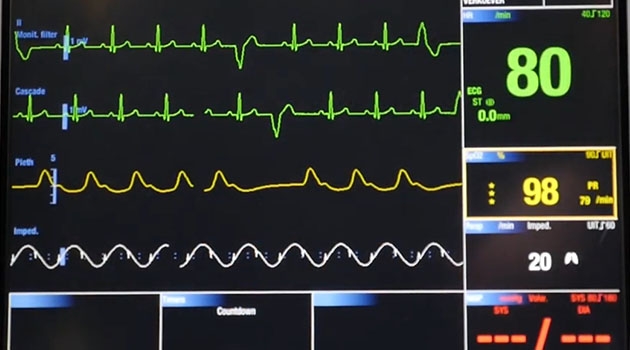
“Artificial intelligence (AI) can be a tool in healthcare to interpret ECG and detect diseases affecting the heart.”
Source: UPPSALA UNIVERSITY
Artificial intelligence (AI) can be a tool in healthcare to interpret ECG and detect diseases affecting the heart. Researchers at Uppsala University, together with cardiac specialists in Brazil, have developed an AI that automatically diagnoses cardiac fibrillation and five other of the most common ECG abnormalities as well as cardiac doctors.
An electrocardiogram, or ECG, is a chart that shows the electrical signals generated in the heart and can reveal various types of diseases that affect it. It is used routinely in care and every ECG today must be interpreted manually by a heart specialist.
The new study shows how an AI can automatically diagnose anomalies that can be detected in an ECG. The AI has first been trained on more than 2 million ECGs collected by cardiac specialists who have been diagnosed by cardiac specialists. In this way, it learns to find the typical patterns for six of the most common ECG abnormalities and can then diagnose a completely different patient with any of these diseases, as well as a cardiac specialist.
Opportunity to improve cardiac care
Yet the method is not ready to be used in medical clinics and hospitals. But the researchers believe that in the future it has great opportunities to improve cardiac care in low- and middle-income countries where large sections of the population do not have the same access to specialists who can interpret the ECG that we have here in Sweden.
– This is the first result of a collaboration that we have built up over the past two years. To dare to invest in this type of deep collaboration between researchers in AI and researchers in medicine I believe very much in the future to create new knowledge that can help us people to a better life, says Thomas Schön, professor of regulatory technology and researcher in machine learning / AI, who is responsible for the technical part of the study.
Model that learns to solve problems
The mathematical model, so-called deep artificial neural networks, which underlie this study is a good example of the basic idea in machine learning where computers themselves build a model and use it to learn to solve data from collected data. That method differs from the classic way of working with a computer and where the computer is manually programmed exactly for the specific task it is to solve. In many problems, the results have been found to be better if machine learning is used and the computer itself can find patterns from numbers, texts, diagrams and pictures collected.







Leave a Reply